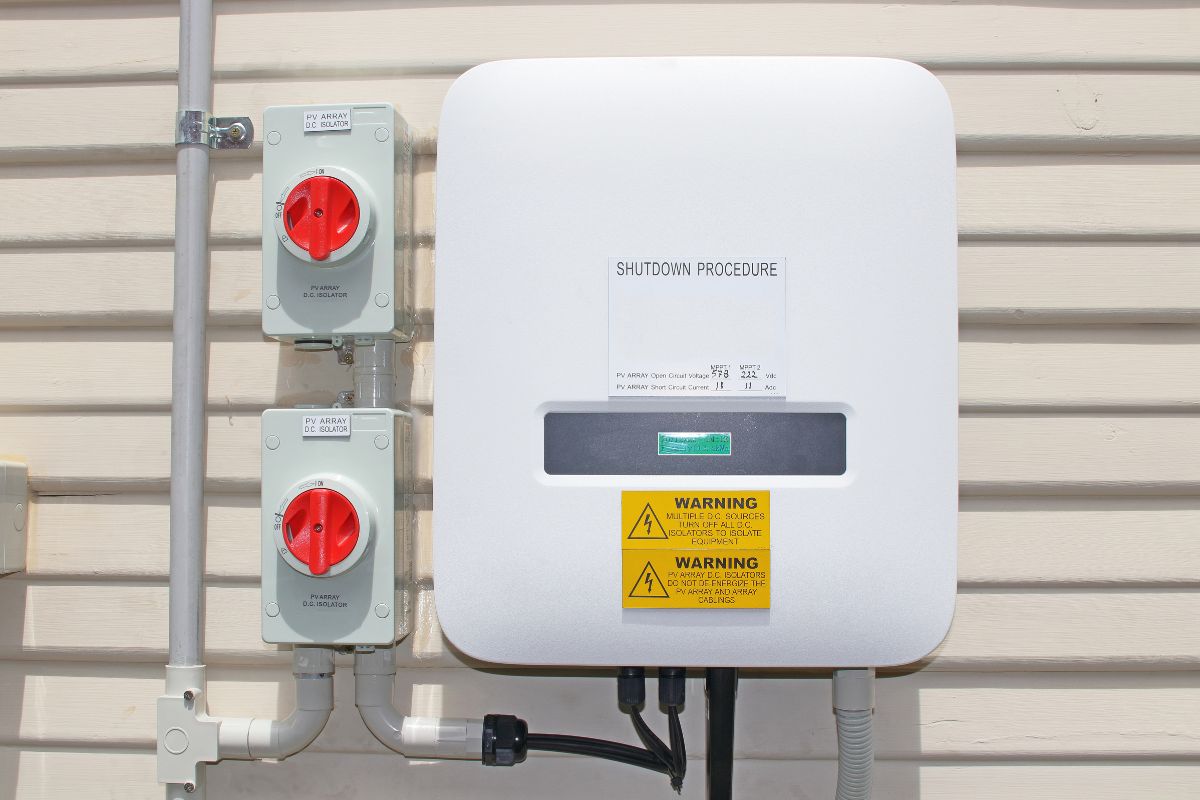Despite their essential role, solar inverters can sometimes encounter issues that can impact the overall performance and efficiency of the solar system.
In this article, we'll explore some of the most common solar inverter EcoFlow problems and their corresponding solutions.
1. Inverter Failure or Malfunction
One of the most common issues with solar inverters is outright failure or malfunction. This can be caused by various factors, including:
- Overheating: Solar inverters can overheat due to poor ventilation, high ambient temperatures, or internal component failures. Overheating can lead to reduced efficiency, system shutdowns, or even permanent damage.
- Solution: Ensure proper ventilation and cooling for the inverter, install shading or heat sinks if necessary, and consider replacing faulty components or the entire inverter if overheating persists.
- Power Surges: Sudden spikes in voltage or current can damage sensitive electronic components within the inverter.
- Solution: Install surge protection devices to safeguard the inverter from power surges, and ensure proper grounding and bonding of the system.
- Aging and Wear: Over time, inverter components can degrade due to normal wear and tear, leading to reduced performance or failure.
- Solution: Monitor the inverter's performance regularly and replace it when it reaches the end of its expected lifespan, typically around 10-15 years.
2. Communication and Monitoring Issues
Solar inverters are often equipped with monitoring capabilities that allow users to track system performance and identify potential issues. However, communication problems can arise, preventing proper monitoring and troubleshooting.
- Loss of Internet Connectivity: If the inverter relies on an internet connection for monitoring, a loss of connectivity can disrupt data transmission and remote monitoring capabilities.
- Solution: Check your internet connection and router settings, and consider installing a backup communication method, such as a cellular or satellite connection.
- Faulty Sensors or Wiring: Incorrect wiring or faulty sensors can provide inaccurate data, making it difficult to identify and resolve issues.
- Solution: Inspect wiring and sensor connections, and replace any faulty components. Consider hiring a qualified professional for more complex issues.
3. Grid Connection Problems
Solar inverters are designed to synchronize with the utility grid, ensuring that the AC electricity generated by the system is compatible with the grid's voltage, frequency, and phase. However, grid connection issues can prevent the inverter from properly feeding power into the grid.
- Utility Grid Disturbances: Power outages, voltage fluctuations, or other grid disturbances can cause the inverter to disconnect from the grid as a safety measure.
- Solution: Monitor utility grid conditions and contact your local utility provider if persistent issues occur.
- Improper Grid Settings: Incorrect settings within the inverter's grid-tie parameters can prevent proper synchronization with the utility grid.
- Solution: Review and adjust the inverter's grid-tie settings according to local utility requirements and manufacturer recommendations.

4. Solar Panel Issues
While solar inverter problems can stem from the inverter itself, issues with the solar panels can also impact the inverter's performance.
- Shading or Soiling: Shading from nearby objects or soiling on the solar panels can reduce their output, causing the inverter to operate at suboptimal levels.
- Solution: Ensure proper panel placement and orientation to minimize shading, and implement a regular cleaning schedule to remove dirt, dust, or debris from the panels.
- Panel Degradation or Defects: Over time, solar panels can degrade or develop defects, such as hotspots or micro-cracks, reducing their overall efficiency.
- Solution: Regularly inspect and maintain solar panels, and consider replacing underperforming or defective panels to ensure optimal system performance.
Firmware and Software Updates
Firmware and Software Updates Solar inverter manufacturers regularly release firmware and software updates to address known issues, improve performance, enhance security, or introduce new features. Keeping your inverter's firmware and software up-to-date is crucial for optimal operation and to take advantage of the latest improvements.
Potential Issues with Outdated Firmware or Software:
- Compatibility issues: Older firmware or software versions may not be compatible with newer hardware or system components, leading to integration problems or reduced functionality.
- Bugs and vulnerabilities: Unpatched bugs or security vulnerabilities in outdated firmware or software can compromise the inverter's performance, stability, and security.
- Missed performance enhancements: Manufacturers often release updates to improve energy conversion efficiency, monitoring capabilities, or other performance-related aspects.
- Lack of new features: Outdated firmware or software may prevent you from accessing new features or functionalities introduced in later versions.
Recommended Solution:
- Regularly check for updates: Monitor the manufacturer's website, support forums, or notifications for information about the latest firmware and software releases.
- Follow installation procedures: Carefully follow the manufacturer's recommended procedures for installing updates, which may involve specific steps or precautions to ensure a smooth and successful update process.
- Schedule maintenance windows: Plan for potential downtime or system disruptions during the update process and schedule maintenance windows accordingly, especially for larger or critical installations.
- Consider automatic updates (if available): Some inverter models or monitoring systems may offer automatic update options, which can simplify the process of keeping your system up-to-date.
Conclusion:
In conclusion, troubleshooting solar inverter issues requires a combination of preventive maintenance, regular monitoring, and a thorough understanding of the potential problems that can arise.
By addressing common issues such as inverter failure, communication problems, grid connection challenges, solar panel-related issues, and keeping firmware and software up-to-date, solar system owners and professionals can ensure optimal performance and maximize the benefits of their solar investment.
Neglecting these crucial aspects of solar system maintenance can lead to reduced energy production, increased downtime, and ultimately, financial losses.
Therefore, it is imperative for stakeholders to prioritize proactive measures, stay vigilant for potential issues, and swiftly implement appropriate solutions to maintain the efficiency and longevity of their solar power systems.
By fostering a culture of diligent troubleshooting and problem-solving, the solar industry can continue to grow and contribute to a more sustainable and renewable energy future.






Share: